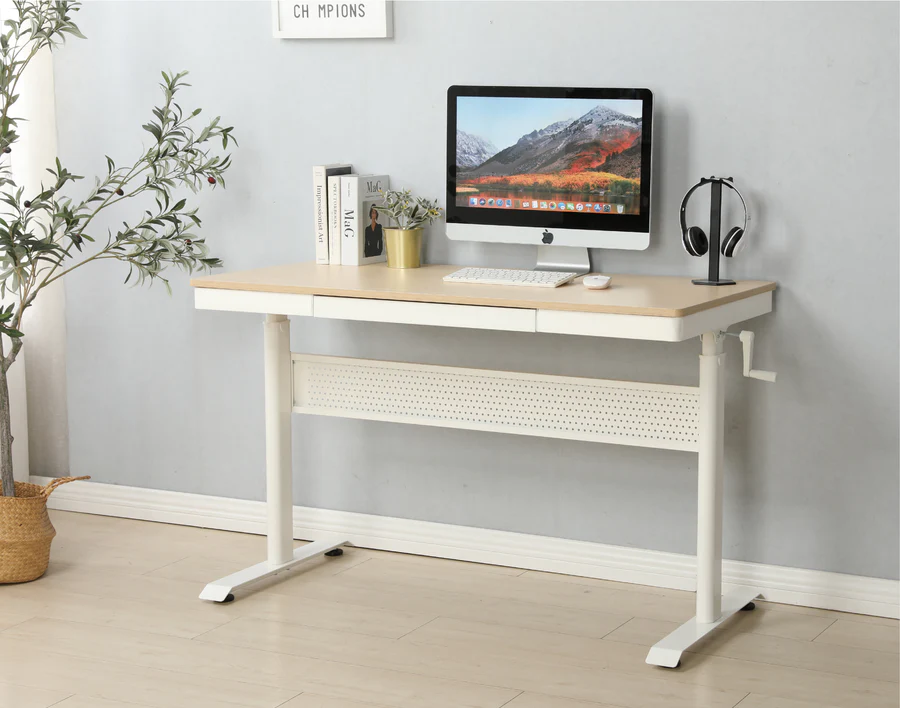Physical Address
304 North Cardinal St.
Dorchester Center, MA 02124
Physical Address
304 North Cardinal St.
Dorchester Center, MA 02124


In the modern workspace, the standing desk has emerged as a game-changer, offering a healthier alternative to the traditional sedentary office setup. This article explores how to strike the perfect balance between standing and sitting, ensuring you reap the full benefits of your standing desk without compromising your comfort or health.
The popularity of standing desks has skyrocketed in recent years, largely due to growing awareness of the health risks associated with prolonged sitting. These desks offer a practical solution to the sedentary nature of modern office work, which often involves extended periods of sitting.

Standing desks, particularly height-adjustable and sit-stand models, cater to diverse user needs, accommodating different postures and activities throughout the workday. Their endorsement by health experts and ergonomics specialists has further fueled their widespread adoption.
Standing desks offer numerous health benefits, primarily by reducing the risks associated with a sedentary lifestyle. By alternating between sitting and standing, users can decrease prolonged inactivity and support their overall wellness.
These desks also promote good posture and reduce back discomfort, encourage a correct eye level with the computer screen, and maintain a comfortable arm angle. Moreover, they can positively influence metabolic health and mental well-being, contributing to increased energy, focus, and job satisfaction.
Finding the right balance between standing and sitting at a sit-stand desk is crucial. The key is to alternate between these two positions throughout the day, mitigating the risks of prolonged sitting while preventing fatigue from excessive standing.
An effective strategy is to start gradually, standing for short periods and increasing this time as you become more comfortable. Listen to your body’s signals and change your position when you feel discomfort or fatigue. Incorporating regular breaks for stretching or walking can also improve blood circulation and provide a change of posture.
Determining the optimal standing duration at a standing desk involves various factors, including personal comfort, work nature, and ergonomic guidelines. Experts generally recommend a ratio of 1:1 or 2:1 for sitting versus standing. However, this ratio should be customized based on individual comfort levels and tasks.
Maintaining good posture while standing is crucial. Your standing desk should be at a height where your arms can comfortably rest at a 90-degree angle while typing, and your computer screen should be at eye level to prevent neck strain.
For those new to standing desks, start slowly and gradually increase your standing time over several weeks. Pay attention to any discomfort or fatigue and adjust your routine accordingly.
While standing desks offer numerous health benefits, prolonged standing, especially in improper postures, can lead to health problems. Awareness and preventive measures are key to avoiding these issues.
Maintaining good posture, shifting your weight regularly between your feet, and balancing your standing time with sitting can help prevent these problems. Regular physical activity, such as walking or stretching during breaks, can also counteract these effects by boosting circulation.
Incorporating the right accessories can maximize the benefits of a standing desk and ensure ergonomic comfort. These include an anti-fatigue mat, a monitor arm or stand, a separate keyboard and mouse, an ergonomic chair, and a footrest. These accessories enhance the functionality of a standing desk, contributing to overall comfort and ergonomic alignment.
Embracing a standing desk requires balancing your standing and sitting positions throughout your workday. Gradually adapt to longer periods of standing for a healthier routine, ensuring your workspace evolves with your needs for optimal productivity. Explore more articles on our blog for further information on ergonomic chairs and office setups.